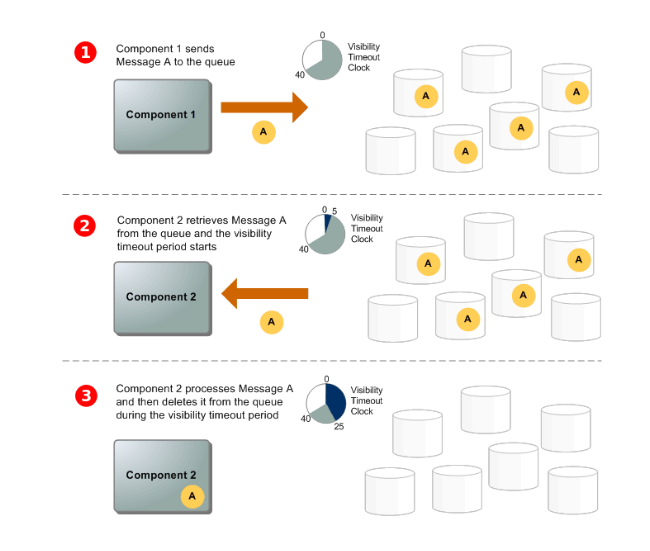Amazon SQS Queue Types: Exploring Amazon Simple Queue Service?
This article will focus on:
What is Amazon SQS?
Amazon SQS is a distributed queue system that allows its users to send, receive, and store messages between various software components at any volume. AWS SQS provides support for microservices, and serverless applications and establishes message queues. Furthermore, it also supports the systems or tasks that operate asynchronously.
This means that AWS SQS can send messages without requiring any third-party tool or software. SQS provides the ease of developing message management software to developers. All the other options available for creating such channels require some development skills. But with SQS, we can create this message management software without going into the details of configurations and developments which in turn saves time, effort, and resources.
What is the Basic Architecture of AWS SQS?
The architecture of the AWS SQS consists of three parts i.e., Components, Queues, and Messages. These components can be the sender or receiver. The component which is sending the message will input the message into the queue. On the other hand, when the other component which is to receive the message is available, the message will be sent to it.
Note that the component that was sending the message when performing this operation, the message is distributed across the AWS SQS servers. The user on the other end can delete the messages to avoid any errors or to avoid the message being processed and delivered again.

What are the Different Types of Amazon SQS?
AWS SQS offers several queues which are of two types:
Standard Queues
Standard queues can support an unlimited number of transactions per API action. Furthermore, the order of the messages can differ occasionally at the time of delivery. SQS makes sure to deliver the message at least once but in some cases, more than one copy of the message will also be sent.

FIFO Queue
FIFO refers to the “First in First out” queue. FIFO supports 3000 messages per second and can be upgraded to higher throughput by activating the high throughput mode of FIFO. These 3000 messages refer to 300 API calls with 10 messages each.
In FIFO, a message is delivered only once and will be available until the user deletes it manually. FIFO strictly follows the order of messages in which they are sent at the time of delivery:
 What are the Advantages of Using AWS SQS?
What are the Advantages of Using AWS SQS?
Here are the benefits of the AWS SQS listed:
- Reliable message delivery
- Security to sensitive data
- Cost-effective
- No additional configurations or Administrative Overhead
- Provides Scalability
- Reliable, fast, and Durable
That is all from the guide.
Conclusion
AWS SQS is a message management service and is composed of two queues i.e., Standard and FIFO queue which offers different functionality to the users. AWS SQS can be accessed by the AWS Management Console and supports multiple languages. This article illustrates the introduction, architecture, types, and advantages of AWS SQS.
Source: linuxhint.com
